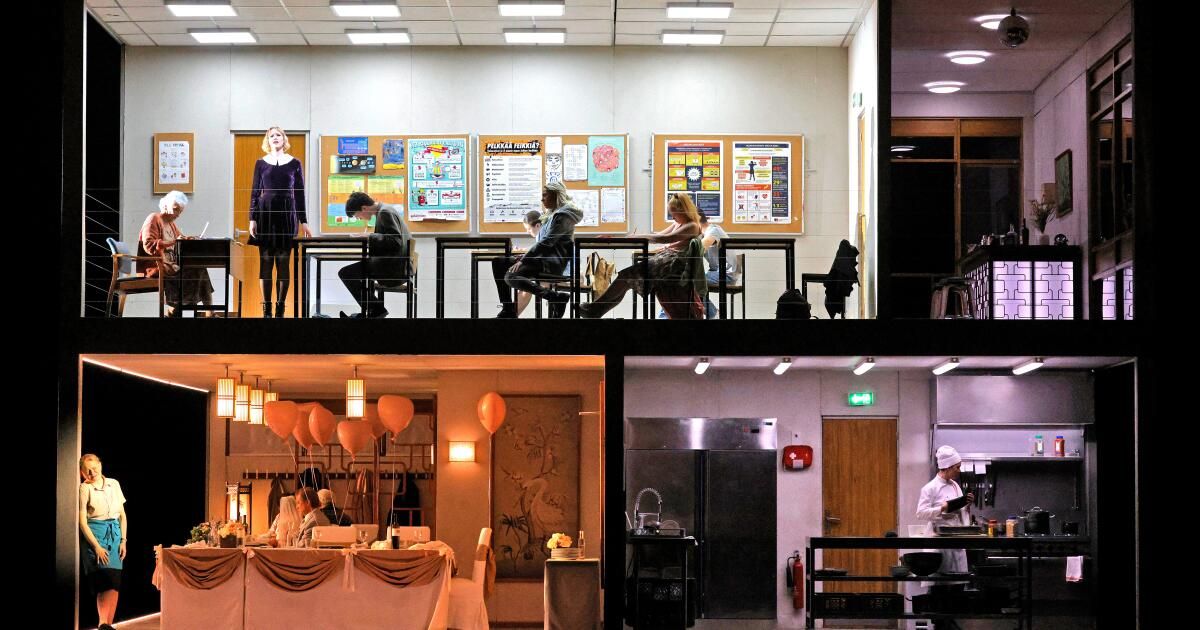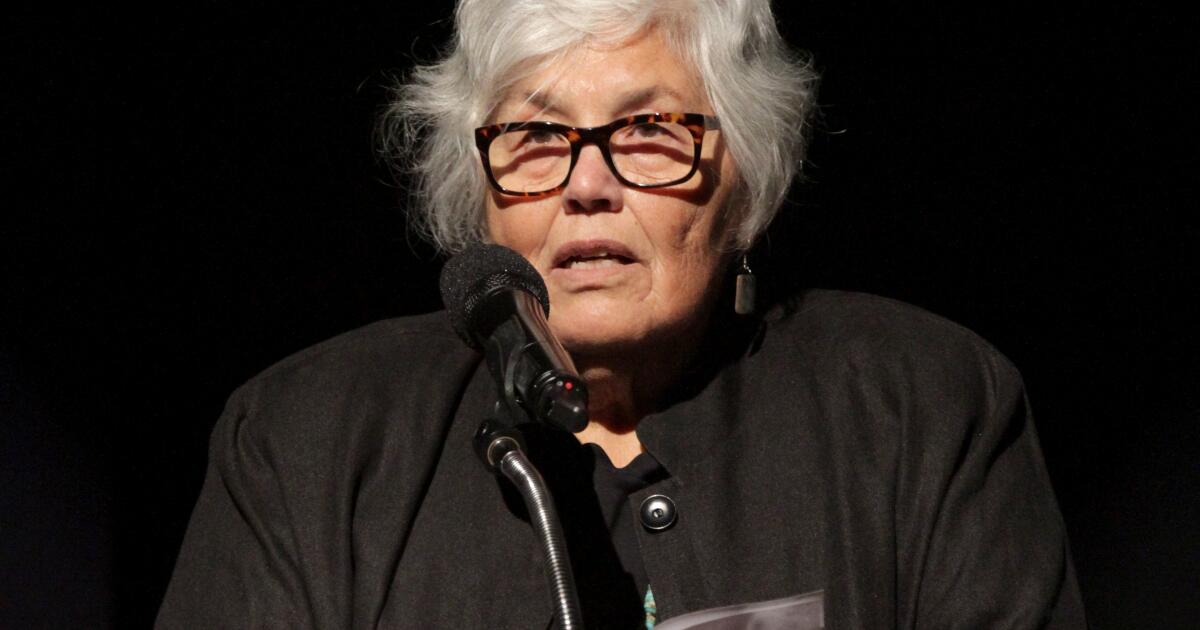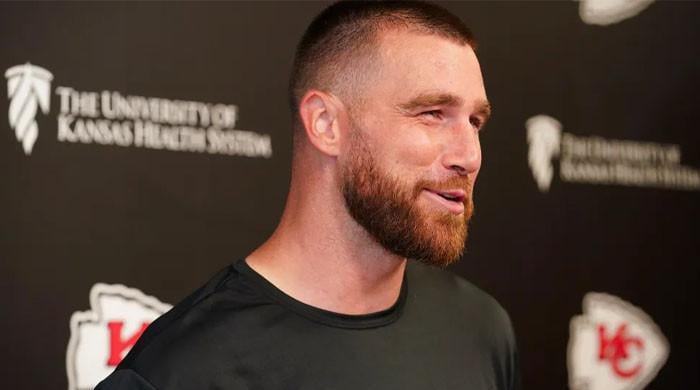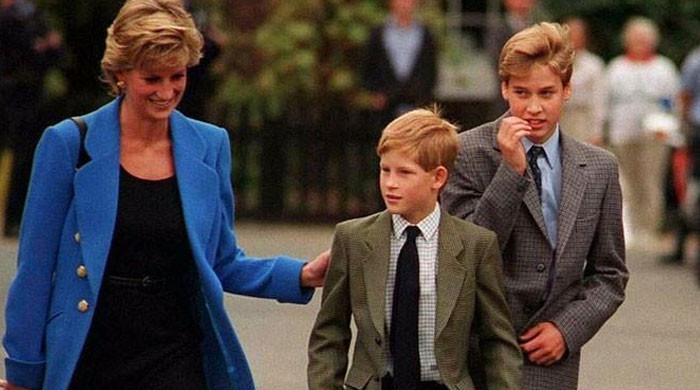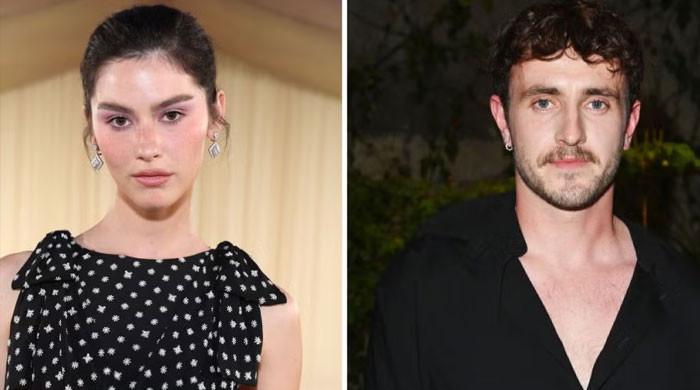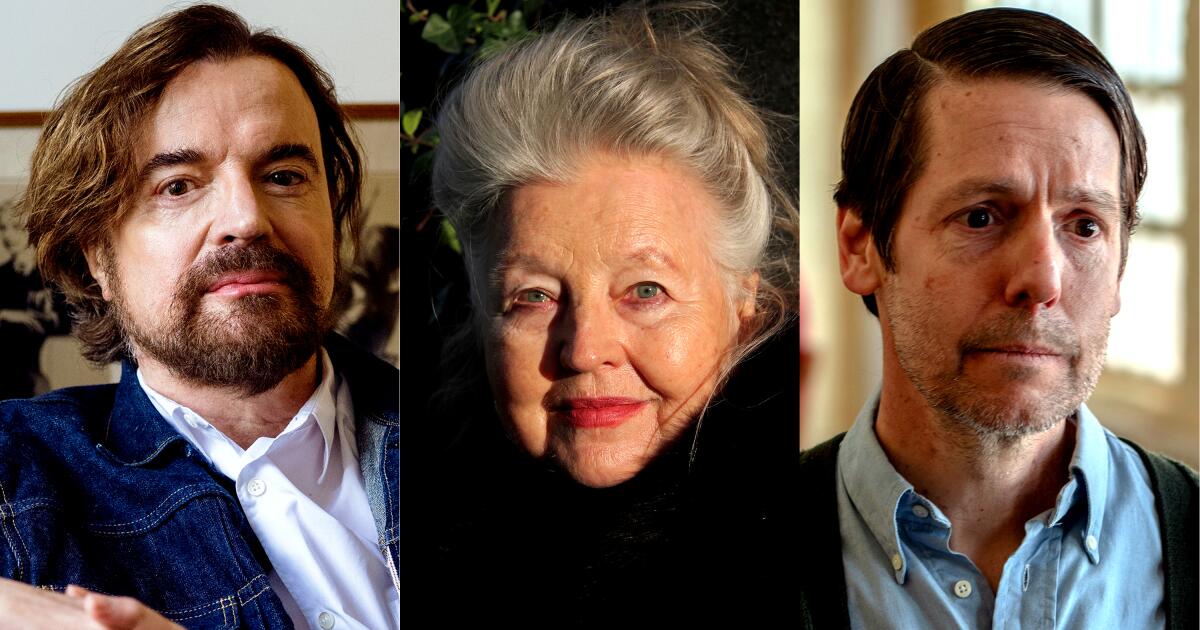The weather was a pleasure. While much of the rest of the country was burning, San Francisco last weekend looked like a beatific city dominated by balmy but sunny cerulean skies and ideally cold nights.
The Civic Center and the adjacent Hayes Valley neighborhood offered their own musical gratifications. June is a special month for the San Francisco Symphony, whose music director is allowed to indulge his passions. The San Francisco Opera has a three-opera festival in June, and the incomparable Kronos Quartet hosts its own festival.
The symphony, the opera and Kronos were all wonderful. Esa-Pekka Salonen led a soaring performance of Bruckner’s Fourth Symphony at Louise M. Davies Symphony Hall, the orchestra’s brass as golden as a certain nearby bridge. Next door at the War Memorial Opera House, a thrilling performance introduced America to Kaija Saariaho’s opera “Innocence,” a shocking drama of gun violence. A couple of blocks away at SF Jazz, Kronos celebrated its 50th anniversary, reminding us that this ensemble has changed music like no other.
All the places were full. All the audiences I joined were infectiously enthralled. It might be added that all three institutions still provided large, glossy program books with extensive notes, something almost extinct in the rest of the country.
Yet everywhere he went there was an inescapable sense of doom, of an eerie calm before the storm. Now there are beautiful days, but summer portends fires. The apparent urban bliss camouflages San Francisco's seemingly intractable urban ills.
As I headed to Davies Hall for the Sunday matinee, I was greeted by a senior member of the orchestra who was handing out yellow flyers containing a message from the musicians to those in attendance. “The board is trying to turn us into a regional orchestra,” the bassist announced angrily.
In fact, the symphony is in a state of confusion that seems existential. Four years ago, Salonen became music director with a mandate to foster innovation, building on what he had accomplished in his 17 years leading the Los Angeles Philharmonic.
Unfortunately, the city and its orchestra were hit hard by the pandemic. Instead of giving Salonen the support to realize his bold vision, the San Francisco Symphony, which has a $345 million endowment (the second-largest of any American orchestra), cut, cut, and cut some more. Management insists that otherwise the institution will run out of cash. The dire financial projections have become a self-fulfilling prophecy.
Salonen has refused to renew his contract (which will last for another season) after the board of directors reduced a European tour, new commissions, innovative programming and stage productions with Peter Sellars, his much-hyped digital media and his series “Concerts for Children “. and the powerful creative partners from various fields of music and technology appointed by Salonen. A black box series, SoundBox, a hit among young audiences, has also been discounted. Frank Gehry's proposals for inexpensive new experimental rooms made by redeveloping warehouses on Treasure Island should be a no-brainer, but for this board they're a non-starter. A musicians' strike is likely to take place in the autumn.
Yet one ironic result of these problems is an orchestra bent on proving its worth. In its Sunday performance, which opened with a wonderful rendition of Schumann’s Piano Concerto and soloist Yefim Bronfman, there was a relentless intensity. Meanwhile, Bruckner’s brazen rhythmic patterns in his “Romantic” symphony sounded like bold calls for change and insults against the board. In the composer’s big lyrical phrases, the orchestra seemed to say, with profound expression: Read our collective hearts.
A scene from the San Francisco Opera production of “Innocence” by Kaija Saariaho.
(Corey Weaver / San Francisco Opera)
The atmosphere at the San Francisco Opera seems more tolerant than bellicose to an outsider. But he has also instituted big cuts. As opera production costs rise, it will reduce the number of operas performed from eight to six next season. That's a third of the figure the company once presented. However, the big difference between this company and the orchestra is that the will to continue with its mission seems to have not changed and new ways to pay for it are being explored.
I met with Matthew Shilvock, the company's CEO and a trained musicologist. He says costs are rising so rapidly that an additional $2 million to $3 million is needed each year for even this modest number of productions.
Shilvock's strategy is to productively harness the kind of crisis intensity felt by its neighboring symphony. Every production, every performance must matter. That includes continuing to present new and challenging work.
“Innocence,” which has been a hit, gives her confidence that this is the right approach. The opera, which premiered in Aix-en-Provence, France, in 2021, was the last by Saariaho, who passed away a year ago. It is also a change of direction from her earlier, deeply philosophical and poetic pieces, all made in collaboration with Sellars.
There is little of that poetry or depth here; “Innocence” is more like a Netflix drama. Ten years after a school shooting that left 10 students and their teacher dead, the mother of one of the victims and the young shooter confront each other at a party. The students are ghosts, actors with speaking roles. There are strange and surprising twists in the plot that keep the audience in suspense.
The issue of armed violence was presented with complexity. Simon Stone's elegant production is cleverly designed on a revolving stage. The large cast of singing actors was excellent on Friday night, the last of the six performances. The enthusiastic conductor, Clément Mao-Takacs, could be too showy, but the real glory of the opera, its saving grace in many ways, was the exceptional beauty and expression of Saariaho's orchestral writing, and this turned out spectacularly well.
Beneath a surface of undulating sonic beauty, the roots of the devastating elements of “Innocence” can be found in Saariaho’s 1987 “Nymphéa” for string quartet and electronics. This is one of more than 1,000 string quartets that Kronos has commissioned over the last half century. Thanks to Kronos, Steve Reich, Terry Riley, Philip Glass and many of the greatest names of the 20th and 21st centuries, along with composers of rock, jazz, country, folk, raga, Chinese pipa and other global traditions from every continent, resorted to this unlikely means.
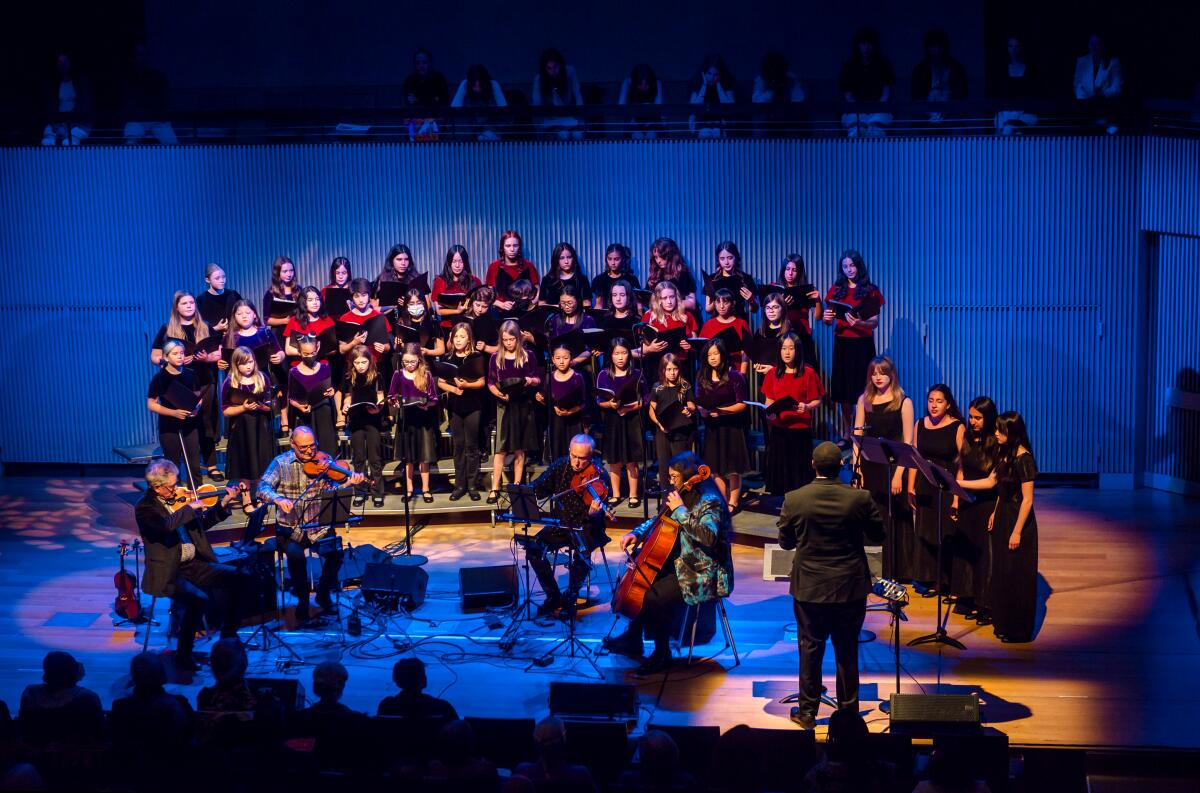
The Kronos Quartet performs with the San Francisco Girls Chorus at SF Jazz on Saturday night in San Francisco.
(Lenny González / Kronos Quartet)
No ensemble in music history has come close to doing as much, and a four-night festival can't come close to showcasing it. So, just by looking back a little, Kronos did what he always does: look forward, performing new music.
Saturday night, the first of the two shows I heard, was the premiere of Mary Kouyoumdjian’s spiritually captivating “The Space Between.” There was a movement in the new and otherworldly “This assortment of atoms: just once!” This is one of the Kronos Quartet's “50 for Future” commissions from composers including Glass and Laurie Anderson, producing works suitable for young string quartets. All sheet music is available for free on the Kronos website and more than 38,000 sheet music has been downloaded in 108 countries and territories.
The concert also included two new works by teenage composers Hannah Wolkowitz and Ilaria Hawley. The San Francisco Girls Chorus joined Kronos to perform works by artists including Yoko Ono, Pete Seeger and Mali Hawa Kassé singer Mady Diabaté. In the end, the guest was the Iranian singer Mahsa Vahdat.
The festival wrapped up Sunday with Sam Green's live Kronos documentary, “A Thousand Thoughts,” featuring live Kronos performances. This was the 46th and final time the film was shown. Two key members of the quartet from the past four decades, violinist John Sherba and Hank Dutt, are retiring. It was a bittersweet ending, deeply moving and loving.
What will happen after Kronos? The outfit is also losing its one and only manager, Janet Cowperthwaite, who behind the scenes made the commissions and everything else possible. First violinist David Harrington, the quartet's visionary founder, will continue with cellist Paul Wiancko and two new young musicians, violinist Gabriela Díaz and violist Ayane Kozasa.
An era has ended. But Harrington is the most optimistic musician I know. His track record of achieving the unthinkable has made him a sure-fire San Francisco symbol for the future.
It would be a bad investment not to bet on Kronos. Harrington has made the impossible possible, not by cutting back but by tirelessly seeking more. He has gained international support by not letting anything stop him.
The San Francisco Symphony and the San Francisco Opera could do the same by believing in the future, starting by investigating the damn endowments. The city could also (and usually does) do worse than follow Kronos' extraordinary belief in the possible. We all could. The model exists.

